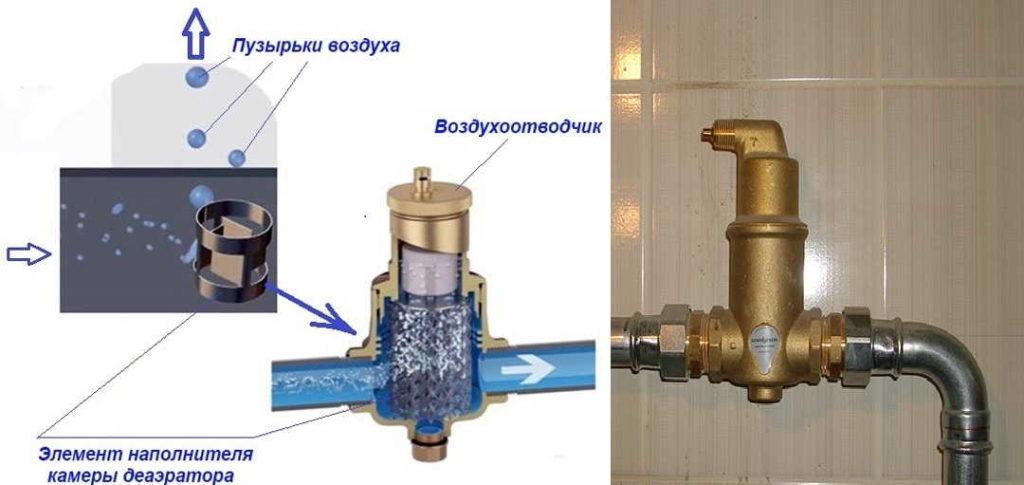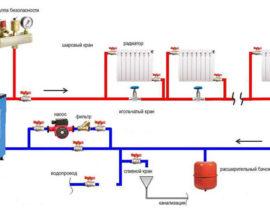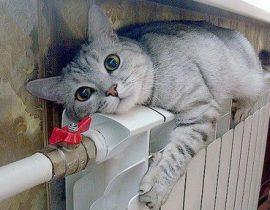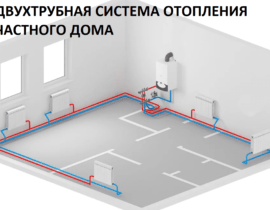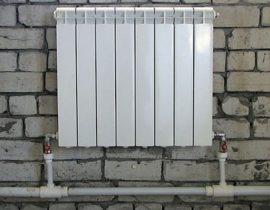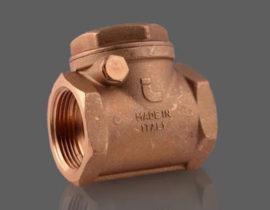Contrary to popular belief, the presence of air in closed systems in which the coolant circulates (heating, cooling, etc.) can cause serious malfunctions and lead to big problems. In addition to the gases that make up the air, that is, oxygen, nitrogen, argon and carbon dioxide, elements that are formed as a result of corrosion or chemical reactions, such as methane, hydrogen and hydrogen sulfide, can also be found in the heating system.
In this post, we'll take a look at the most common causes of air in the system and how to fix it.
Content
The problem of air accumulation in the system
Air can enter a system in a variety of ways and can exist in a variety of forms, but it almost always has a negative effect on system performance. The smallest air bubbles can form in the liquid, which in some cases completely block the flow of water, creating so-called air locks.
Another problem is the dissolved gases that naturally occur in water. Under favorable conditions (pressure drop or temperature increase), they turn into microbubbles. Air can enter the system as a result of diffusion (penetration) through the walls of pipes, especially plastic ones and those that do not have an anti-diffusion layer.
Unfortunately, the central heating systems in many homes are built from low-quality pipes, in which this phenomenon is not unusual. Of course, this leads to the fact that air continuously enters the coolant, making it difficult for all components of the system to work.
Why can air accumulate in the heating system?
Despite the tightness and serious protective measures in modern heating systems, they are regularly filled with gas.
Here are the most common reasons:
- when designing pipelines, a violation of the angle of inclination was allowed;
- individual elements of the heating structure are loosely connected to each other;
- malfunction of the air vent;
- the spread of corrosion caused sealing problems;
- water enters the pipeline too quickly, which led to the formation of microbubbles that accumulate inside the structure;
- a consequence of the repair, during which an unforeseen depressurization occurred, and, accordingly, air penetration.
Air removal methods
There are many devices, the direction of which is to reduce the level of saturation with gases in water. Some centrally absorb the air that accumulates in the system. Others work "pointwise", which is more effective when working with large systems. We offer you three main ways to deaerate.
Ventilation holes
The removal of air bubbles through the ventilation holes located at the upper ends of the risers and in those sections of the pipeline in which air actively accumulates.
Both manual and automatic air vents can be used, which perform the function of ventilation by simply dumping gas accumulations from the ventilation chamber.Deaeration of the installation in this case occurs automatically and continuously.
However, manual and automatic vents are often not enough to completely clear the system of gas buildup, as they only effectively remove large air bubbles, while the main problem for most systems is the accumulation of microbubbles, which are often not even visible to the naked eye.
Vacuum deaerator
An equally effective device for separating gases (and not only in the form of free gas bubbles and microbubbles, but also already dissolved in a liquid) is a vacuum deaerator.
We remember that air (a mixture of many gases) precipitates at all points in the system at which an increase in temperature (the effect of rapidly heated water) and a drop in pressure (the effect of opening a bottle of carbonated drink) is recorded.
But what if gases are dissolved in water? To absorb gas in water, special vacuum degasifiers are available on the market, the design of which deliberately creates conditions for the formation of microbubbles of dissolved gases.
Separators
The last way is to remove air using separators. This device is a small iron cylinder equipped with an air vent, a gas release valve and a special mechanical separating element that “filters” the water flow from microbubbles and sludge particles, functioning simultaneously as an air vent, filter and deaerator.

The advantage of separators is that they are reliable, durable, have a simple design and do not require maintenance.
The location of the separator is affected by external conditions.Remember Henry's law of gases: "A gas will dissolve in a liquid as long as there is a balance between the partial pressure of the gas and the pressure in the liquid." Thus, the higher the temperature and the lower the operating pressure, the more efficient the deaeration process will be.
Although this situation is extremely rare, it should be remembered that the placement of the separator in the suction zone can cause the dynamic pressure in the system to reach zero or even negative values.
This is an operating range including the suction side. circulation pump. In this case, the separator will not only do its direct work, but also suck in air from the atmosphere. To prevent this development of events, it is recommended to increase the distance to the pump.
Air separators are more commonly used in larger installations with rapid temperature changes, such as water-jacketed fireplaces. They are installed in places with high temperatures, where air most often falls out in the form of microbubbles, for example, in the supply ventilation ducts, right behind the fireplace.
The degree of purification of water flows when using separators is much higher, but the assembly method is different. In order to clean the maximum amount of deposits, it is recommended to place the separator behind the hydraulic coupling or mixing valve, despite the temperature drop.
Summary
To sum it up, a relatively trivial problem with accumulating air in a heating system can have very serious consequences.Therefore, even at the installation stage, you should think about spending several thousand rubles on an adequate filtering system, because in the event of a real failure, you are guaranteed to spend much more to fix the problem.
Video tips for airing the heating system of a private house





